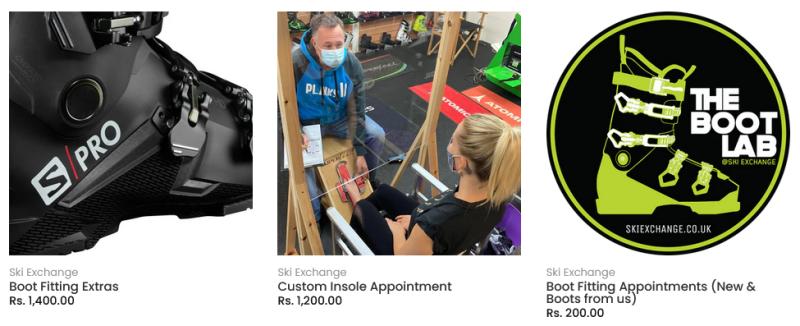What Should Your Ski Boots Be Like If You’re A Complete Beginner - Ski Exchange

If you’re a newcomer to skiing – or something close to that – you will have reason to feel very excited, but also potentially intimidated. After all, you will want to feel comfortable and safe in your ski boots while out on the slopes, not least so that you can begin mastering that learning curve.
But whether or not you have already been considering Ski Exchange boot fitting for making sure your own footwear fits “just right”, the world of ski boots – and the multitude of aspects that affect how they fit – might seem complicated to you.
So, in today’s blog post, we’ll take you through some of the things that characterise beginner-ready ski boots, compared to those your more seasoned peers may be wearing.
A relatively low flex rating
Flex ratings define the stiffness of a ski boot; they range from approximately 60 to 130. As a beginner, you are advised to aim for a sweet spot between 60 and 90, as this will provide a softer and more forgiving feel, translating into a more comfortable experience on the slopes.
As you gain skills and move into being an intermediate and perhaps even advanced-level skier, you will likely begin aiming for a flex range of 90 to 120. These higher ratings suit those who place a greater emphasis on responsiveness than on cushioning.
A design geared towards gentler terrain
Ski boots that have been designed and crafted with novices in mind tend to be softer and more flexible in their build. Such boots are typically created with the expectation that the user will prioritise leisurely skiing experiences on smoothly groomed runs.
So, if you invest in ski boots that have been designed and fitted for beginner use, you can expect to get the best performance out of them on the less challenging slopes classified as green (circle) or blue (square) at ski resorts.
In the event, then, that you can find yourself gaining in confidence and skill and becoming more tempted by steeper and more technically demanding terrains, this is the stage at you should be considering switching to a ski boot that is designed to be more responsive and precise.
Comfort-oriented removable liners
You can expect novice-friendly ski boots to consist of two main parts: a sturdy and durable outer shell, and the softer removable liner.
These liners are created to provide comfort, support, and insulation to the wearer’s foot. If you opt for entry-level ski boots, you can expect them to be well-cushioned and plush to wear, as opposed to the firmer liners used in intermediate and advanced ski boots.
Comfort is still the main purpose of even advanced-level boots’ liners. However, these particular liners are created with the aim of improving energy transfer from the skier to the skis, thereby boosting performance.
The above are not, of course, the only elements that can potentially distinguish beginner-ready from advanced-level ski boots, but you should nonetheless now have a greater sense of how they tend to differ. Arrange a Ski Exchange boot fitting appointment, and you can soon ensure your own ski boots are perfectly adapted to your needs, supported by our Comfort Guarantee


Comments